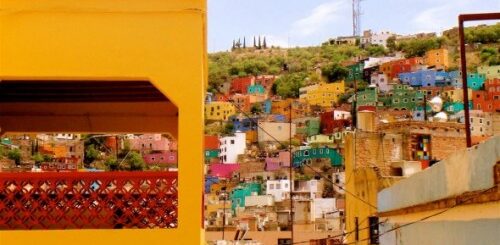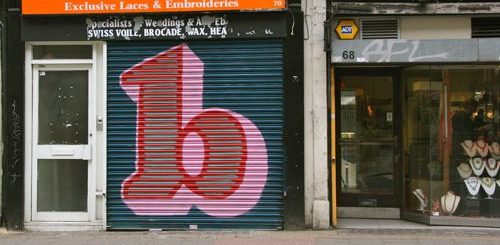{travelogue} Magic, Madonnas, and Millennia in Matera, Italy
I am guessing you have never heard of Matera, a city in the far south of Italy. Despite its incredibly unique and beautiful architecture and its fascinating history, it doesn’t even make it into most Italy travel guides. Truth be told, I had never heard of it until I saw an obscure article about a hotel housed in old cave dwellings. I put it on my mental bucket list and found myself thinking about it from time to time. When a family trip to Italy was in the works, I knew I wanted to make a special trip to check it out in person.
It is stunning.

Matera is located in the “instep” of Italy’s boot, between the heel and the toe, in the Basilicata region. There are two parts of town, the old and the new. When I say “old” I mean really old: the area has been settled since the Paleolithic era. The limestone hills feature natural openings–shallow caves–that attracted early people as natural shelters. Later, people started building home structures in front of the caves, so their houses would look like normal homes from the front, but once you entered, the main interior area was a cave. Sometimes they would dig into the limestone further to make it a bit more roomy. Now a UNESCO World Heritage site, the limestone cave houses–which are called sassi or grotti—make for some splendid scenery.



The town covers one side of a canyon. Across the canyon you can see the remains of the Paleolithic era caves, but nobody has lived there for a very long time.


There are restaurants and hotels that are located entirely in the cave dwellings, although they have been renovated and restored to some degree of luxury.

Some of the churches were also constructed in the sassi. The famous “rock church” is located directly above the more traditional cathedral.

To look at the protected, restored sassi today belies the darker history of the town. Incredibly, the Materans shared these cave houses with their livestock until the 1950s. At that time, even most Italians had no idea that there was a city that was so impoverished and backwards that people were literally living in caves with farm animals, and had an infant mortality rate of 50%. But in 1945, Carlo Levi wrote about Matera in a book called Christ Stopped at Eboli. The book brought the plight of the rural southern Italians of the Basilicata region to people’s consciousness, as Levi wrote eloquently and candidly about how people lived. This led to a forced relocation of the sassi-dwelling Materans, and a closure of the cave homes. From the 1950s to the 1990s, the caves were abandoned and off-limits to everyone. Many are still empty today.


In the 1990s, the old part of Matera was designated a UNESCO World Heritage site, and people were allowed to invest in the sassi, as long as they agreed to maintaining their unique character. You can get a tour with a local guide to see all the sassi and grotti and learn more about the history. Many of the guides have living relatives who resided in the cave houses. Our guide’s grandmother had actually grown up in the sassi, so it was a very rich experience to hear about what life was like, how the forced relocation affected the people, and so forth.

If you happen to be there on July 2nd–which out of sheer serendipity, I did–you will find the townspeople apologetic for closing down some of the tourist sites and attractions. No matter, because you have in store for you a far better attraction: the Feast of the Madonna della Bruna. She is the patron saint of Matera, and the town goes all out to celebrate her for one day each year. The celebration is one of the more unusual and fantastical that I have experienced.
During the day, huge trellises are set up throughout the town to mark a parade route. They are attractive enough in daylight…

But when night falls, they reveal millions of colored lights.

A big parade float featuring a statue of the Madonna della Bruna is paraded under the tunnels of lights through the town. Throngs of people gather to watch her go by.


And then, the able-bodied young men of the town rip the statue to shreds! The tradition has to do with commemorating a historical event involving a Saracen (Muslim) invasion that happened in the early part of the second millenium. In the retelling, it seems the Saracens sacked the churches and cathedrals of Matera and destroyed the religious icons. So this holiday reenacts that destruction. Whomever gets the largest piece is said to have a year of good luck. Like this guy.

Afterwards, there is an epic fireworks show with music. It lasts easily an hour and is by far the best and most complex fireworks show I have ever seen.

If you can make it to Matera, I would highly recommend it. It is one of the most special places I have ever visited, and it amazes me that it’s not more of a tourist destination, since it has so much to offer. If you find yourself in southern Italy, especially if it’s early July, try to make your way there to experience the history, beauty, and culture of this fascinating place.
If you want to go:
Matera is most easily reached from the southeastern Italian city of Bari. It takes about an hour and a half from there, by car or train. From Rome, it is about a four to five hour drive, or you can take a bus. There is currently no train service from Rome. You won’t need a car to get around the sassi, but if you drive there, you can easily park your car in a lot. There are many lovely small hotels and inns to choose from, and you should definitely stay within the old town. The Albergo Sextantio Le Grotte Della Civita is at the top end, and it is absolutely fabulous if you can splurge for it. The rooms are in caves and some are as large as 2,000 square feet, outfitted simply but beautifully. Be sure to have your hotel arrange a tour with a local guide who will take you around the sassi and tell you more about the history.






Recent Comments